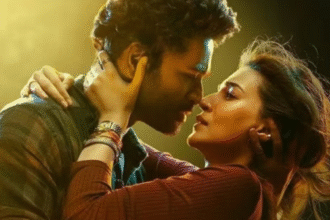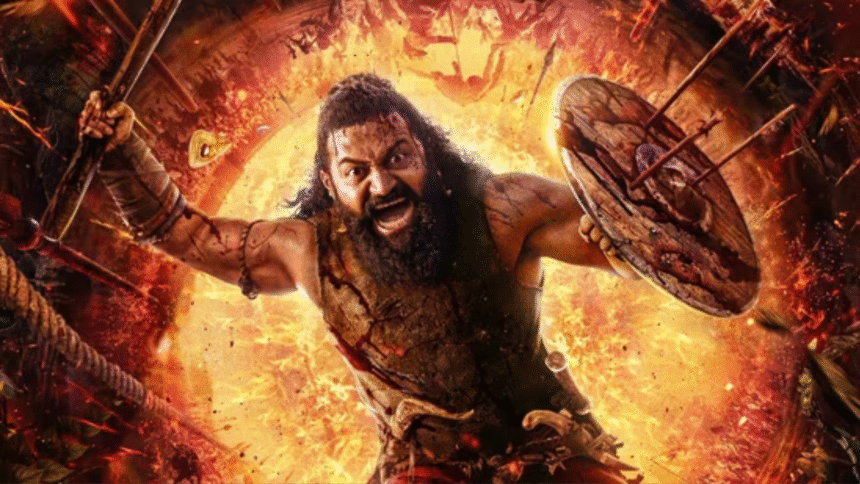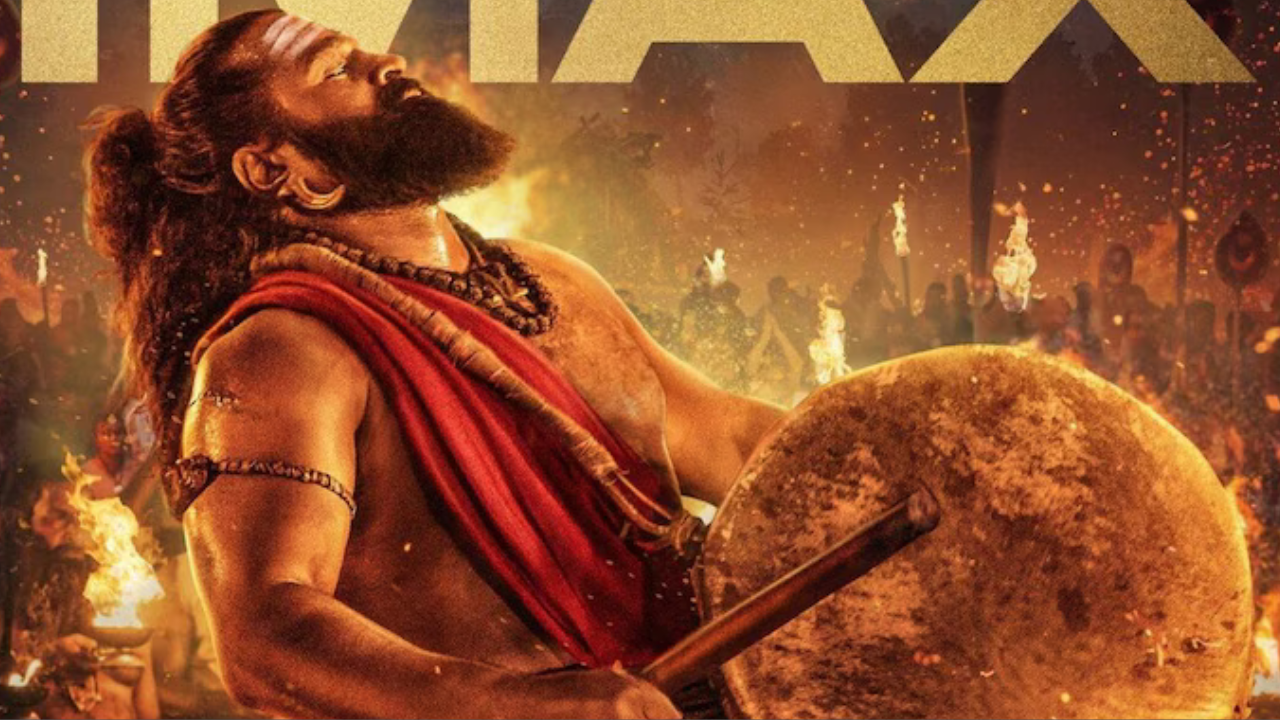When it comes to storytelling that blurs the line between myth and reality, Kantara Chapter 1 Movie has set a benchmark. Its blend of folklore, faith and raw emotion has made it a cultural phenomenon. Now the legend deepens with Kantara Chapter 1, a magnificent prequel exploring the origins of divine power, destiny, and devotion. So, what exactly can fans expect from this highly anticipated epic? Let’s break it down.
A big return: The world of Kantara is expanding
After the massive success of Kantara (2022), writer, director and actor Rishab Shetty is back with Kantara Chapter 1. Unlike a typical sequel, this film travels back in time and explores the mystical roots of the first film. This is not just another sequel, but a complete origin story that traces the beginnings of the divine conflict that shaped the Kantara universe.
This time, the film delves into ancient folklore and shows how the balance between man, nature and the divine was established centuries before the events of the first film. Think of it like uncovering the layers of a sacred legend.
The vision behind the story
What makes Kantara Chapter 1 Movie special is Rishab Shetty’s vision. He didn’t just want to repeat the success of the first film, he wanted to consolidate it. He describes this new chapter as “the story of origins”, in which the roots of the forest god Panjurli Daiva and the mystical kingdom Kantara come to life. The story of the film is based on centuries-old traditions, local legends and spiritual connections. Combining deep mythology and human conflict, Shetty creates a cinematic universe that celebrates the spirit of Indian folklore while remaining rooted in emotion.
The plot: a story about faith, power and destiny
Kantara Chapter 1 is set in pre-colonial India, long before modern civilization reached the coastal areas of Karnataka. The story begins with Berme, a holy warrior (played by Rishab Shetty) who becomes the bridge between man and God. He is not only a fighter, but also a protector: he guards the sacred forest that holds both divine power and human greed.
The film explores themes of land, loyalty and heritage. Kings crave power. Citizens fight for justice. And between them is the forest: living, breathing and watching. When leaders defy divine law, chaos ensues, paving the way for spiritual warfare that will reverberate for centuries to come.
It’s a cinematic tug-of-war between faith and arrogance, between those who revere the land and those who exploit it.
Meet the Cast: Who’s Who in Kantara, Chapter 1
Rishab Shetty once again takes center stage as Berme, the fierce but witty warrior who embodies both human failures and divine intentions. He is joined by some exciting new faces:
Rukmini Vasanth plays Kanakavathi, a royal character who symbolizes strength and duty. Gulshan Devaiah joins the cast as Kulashekhara, a complex antagonist torn between ambition and tradition.
Jayaram, Pramod Shetty and Prakash Thuminad play pivotal supporting roles that provide emotional depth and realism. Each figure has a symbolic meaning and represents the eternal dance between light and shadow.
The Making: A mix of myth and cinematic brilliance
Kantara Chapter 1 Movie wasn’t just about writing a story, it was also about bringing a legend to life. Shot in the lush, dense forests of coastal Karnataka, the film captures the raw energy and mystery of the region.
Cinematographer Arvind S. Kashyap works his magic once again and creates a visual grandeur that rivals any epic. Composer B. Ajaneesh Loknath returns with haunting tribal chants and gripping folk sounds that make the film a sensorial experience. Every image, every sound and every ritual must feel authentic and almost sacred – as if the film itself is a prayer to nature.
Why this prequel is important
You may be wondering: why go back instead of forward?
Quite simply, Rishab Shetty wanted to explore the why behind everything we saw in Kantara. Where did the deity’s connection with the forest begin? How did the divine pact between man and God come about? These are questions fans wanted answered, and Chapter 1 promises to answer them.
It’s about heritage, not advertising. It’s about rediscovering what made Kantara so powerful: the spiritual connection between faith and belonging.
Release date and global reach
Kantara Chapter 1 was released worldwide on October 2, 2025 and connects to Vijayadashami, a festival that symbolizes the victory of good over evil. It was released in Kannada, Hindi, Tamil, Telugu and Malayalam theatres, making it a pan-India show.
The film was released in multiple formats, including IMAX, 4DX and Dolby Cinema, allowing audiences to fully immerse themselves in the spiritual and visual splendor of the Kantara universe.
First reviews and public reactions
Within hours of its release, Kantara Chapter 1 started dominating social media. Critics praised its ambitious scope, witty storytelling, and emotional resonance. Many have called it a “masterclass in mythological cinema.”
The audience was particularly impressed by the way Shetty combined folklore and philosophy. The film not only entertains, it enhances the mood. The climactic sequences, full of ritualistic intensity and raw performances, left many viewers in awe.
Themes and symbolism: much more than just a film
At its core, Kantara Chapter 1 is a reflection on balance – the delicate boundary between nature and humanity, tradition and progress, faith and power. It reminds us that the universe finds its own way of restoring order when people forget their roots.
The film uses metaphors of fire and forest to depict destruction and renewal. The forest spirits symbolize the eternal guardianship of the earth, while the human figures represent greed and vulnerability. It is soulful storytelling, a visual poem that appeals to the primal instincts of humanity.
What awaits us for the Kantara universe
The ending of Kantara Chapter 1 leaves viewers wanting more. Rishab Shetty hinted that this is just the beginning of a larger cinematic universe. Future installments are expected to directly connect Chapter 1 to the events of the original Kantara, creating a looped narrative.
If all goes according to plan, Kantara could become India’s first mythological franchise rooted entirely in local lore and folklore – a narrative movement that rivals global fantasy universes.
The cultural impact: beyond cinema
What Kantara and now Chapter 1 have done is more than cinematic: they’ve created a cultural awakening. The films reignited interest in the Daiva Nartana (Spirit Dance) and Bhuta Kola traditions, bringing coastal Karnataka rituals to global attention.
For many, Kantara Chapter 1 is not just a movie; it is a mirror that reflects India’s spiritual diversity and the ancient belief that divinity resides in the natural world.
Read More: India vs West Indies: Top Performers, Records & Match Analysis
Conclusion
Kantara Chapter 1 Movie is more than just a prequel: it’s a cinematic pilgrimage. It takes viewers on a journey through myth, nature and faith, weaving a story that is both ancient and timeless. It’s about identity, devotion, and the eternal battle between human desires and the balance of nature.
If Kantara (2022) was a revelation, Chapter 1 is a revolution – a reminder that great cinema needs neither capes nor aliens. Sometimes all it takes is a forest, a faith and a storyteller.






